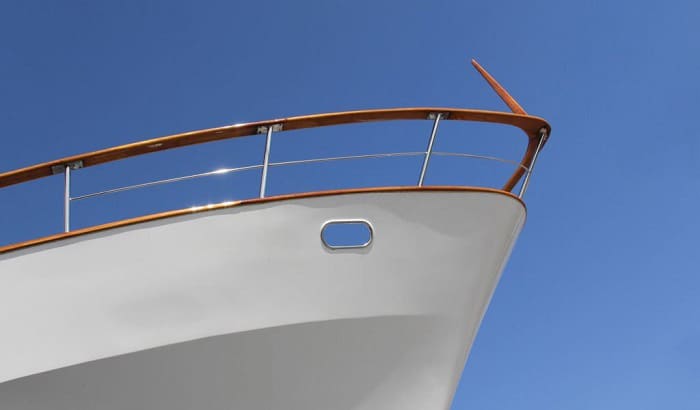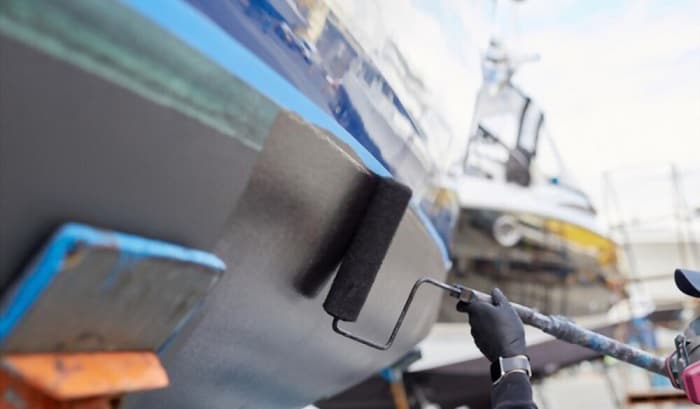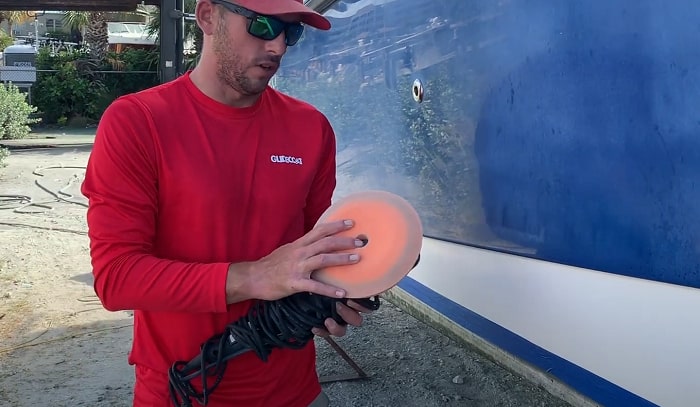When deciding on what paint to use for your boat, Gelcoat vs Marine paint is a topic that needs to be discussed. But what makes each a good choice?
Marine paint is easy to apply and maintain, while Gelcoat lasts much longer at the expense of being difficult to repair. Let’s take a closer look at each to help you decide which is better suited for your needs.
Keep reading to learn more.
Table of Contents
Gelcoat vs Paint – Direct comparison
- When considering paint or gelcoat boat use, note that gel coats do a better job of protecting the boat but are more difficult to maintain and repair.
- On the other hand, marine paint lasts only half as long but is less expensive overall. When purchasing boat coating, marine paint is more expensive, but gel coat costs higher when the entire application process is taken into consideration.
- Another key difference between paint and gelcoat is that the latter comes in a limited number of available colors, making it more difficult to customize and design a boat’s hull.
- The former has a wider variety of colors and is easier to mix for excellent design variety, allowing specific designs or images on a boat.
- Due to the amount of work and skill required for DIY gel coat repair, many boaters consider the use of marine paint.
However, a gel coat is used by most boat manufacturers for coating, and only this can recreate the signature shine that comes with a brand new boat. In this, marine paint just does not compare to fiberglass gel coat paint.
More Details About Gelcoat and Marine Paint
1. Gelcoat
- What is Gelcoat?
Gelcoat is a resin-based material used to coat the surface of many different things such as boats, RVs, and even bathtubs. It can be used on materials such as concrete, composites, wood, or steel. Its biggest advantage is its shell-like quality making it extremely durable.
Since it is applied in liquid form, it is easy to use and spread out evenly with different tools such as a brush or roller.
It is known for its glossy finish, making it ideal for presenting a clean and polished look that is prized highly for any vehicle.
- What is Gelcoat on a boat?
On a boat, marine gelcoat paint is used as a protective coat on fiberglass hulls. It comes with chemical and UV resistance which are important for a boat. Chemical resistance is one of its features to prevent chipping, allowing gel coat to last up to 20 years.
There are two common types of gel coat, all-purpose and tooling; it’s normal for both types to be found in use, but where you find them may be different. All-purpose is the softer and more flexible type that is easier to apply anywhere but is more prone to damage.
On the other hand, Tooling gel coat is stronger due to being harder, which makes it more difficult to apply due to its consistency. This is also the shinier of the two, and its higher durability makes it excellent for use on a boat’s hull.
- Application and maintenance
While painting gelcoat seems simple due to being liquid in form when applying, giving it the desirable appearance it is known for involves a lot of work. This requires a lot of sanding and buffing that can take long hours of work, even with power tools.
Maintaining and repairing it is also difficult and often requires a high skill level. Small cracks appear after a while that needs immediate care though this is just delaying the inevitable. Repairing gel coat may involve even more work depending on how well-taken care it has been.
2. Marine Paint
This urethane paint is specialized for use in a boating environment and is excellent as a gel coat alternative. Standard paint would not survive long if constantly exposed to moisture.
Once dry, marine paint has a glossy finish, making it easy to sport a polished look. While it is easier to maintain, it is also prone to chipping due to the absence of any chemical resistance. UV protection is also not standard for this coating type.
- One-part vs two-part
There are different ways to categorize the types of marine paint. One refers to its mixture with types split into two groups, one-part and two-part.
One-part paint is the type that is simple to use. Just stir the contents of a container and apply with a brush or roller. Two-part paint is much more difficult to use, which requires skill and knowledge and more specialized equipment.
Preparing two-part paint involves mixing two components and balancing the proper ratio to produce the desired results, not to mention that most have harmful fumes and are more expensive than one-part paint.
However, two-part urethane produces a better-looking finish that is also thicker and gives better protection.
- Types of two-part urethane
Another categorization is the types of two-part paint available. There are four common types, though you will find other specialized types. The first is UV protective coating which provides resistance that marine paint usually lacks.
Second is the anti-slip coating used mainly for the deck and walk areas on a boat. The third is the final primer which provides extra durability to your initial coat. The last type is antifouling which is used as paint for the hull bottom to inhibit the growth of any organisms.
Conclusion
Remember that gelcoat vs marine paint is all about your tastes, your budget, and how much work you’re willing to do. Marine paint is less expensive and easier to customize and maintain, while Gelcoat is more expensive but will look as close to a brand new boat as you can get.
Different people will have different priorities, which will impact their choice.
Remember to boat safely.

“My intention from the first day establishing Boating Basics Online is to provide as much help as possible for boaters who want to experience a first safe and convenient trip. So feel free to join us and share your beautiful journeys to the sea!”



